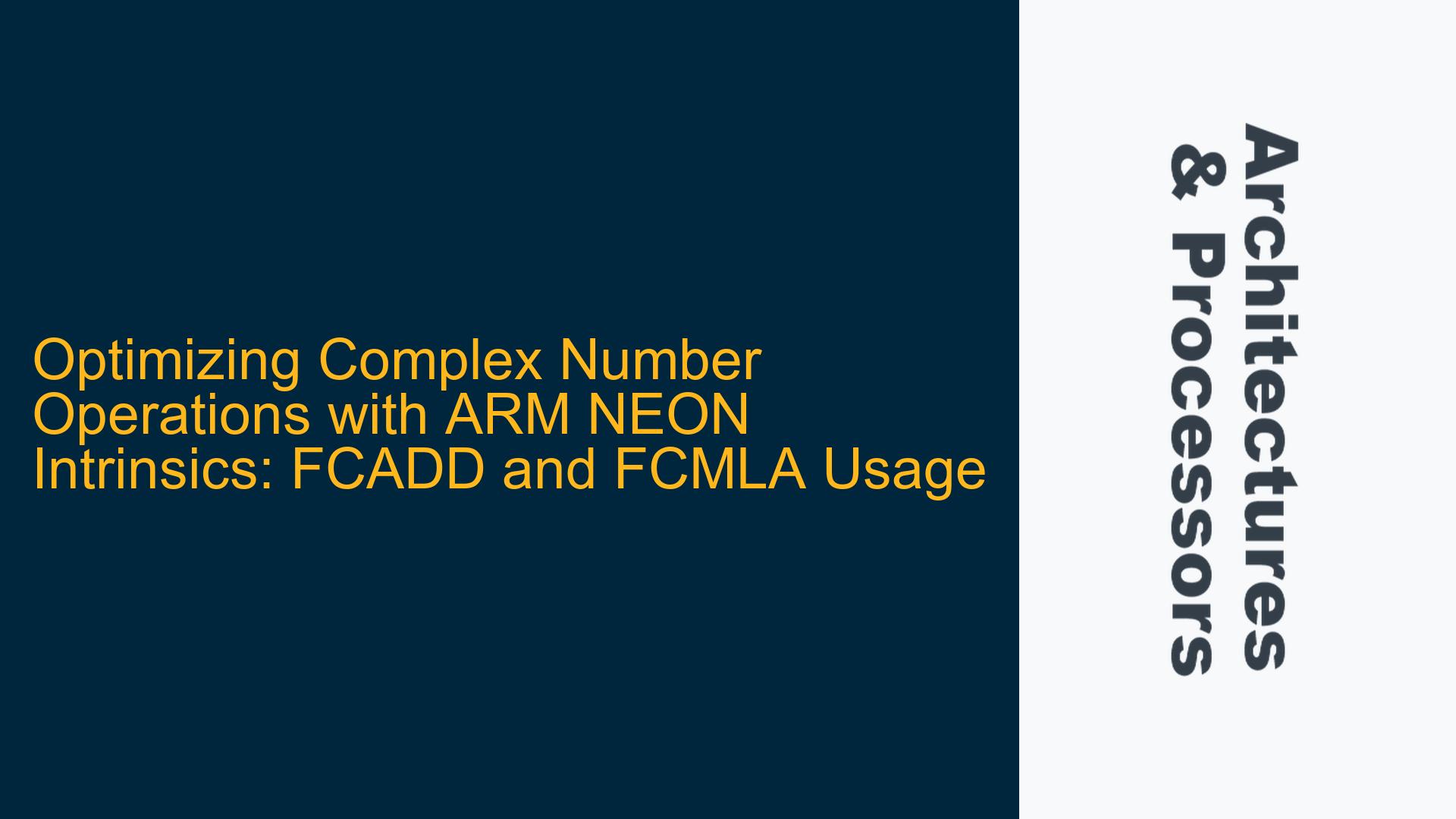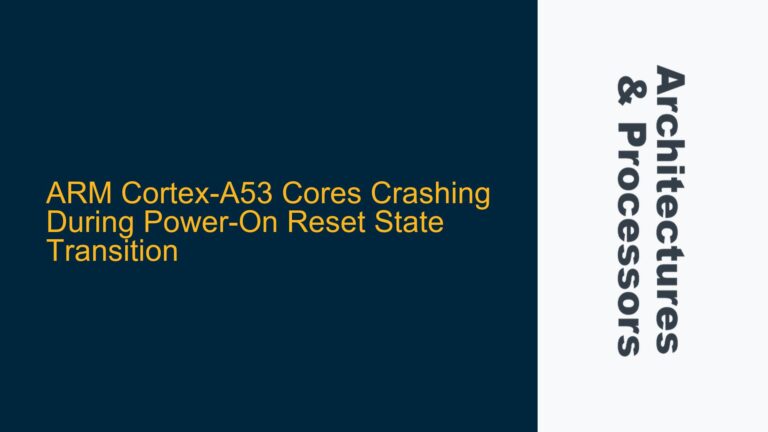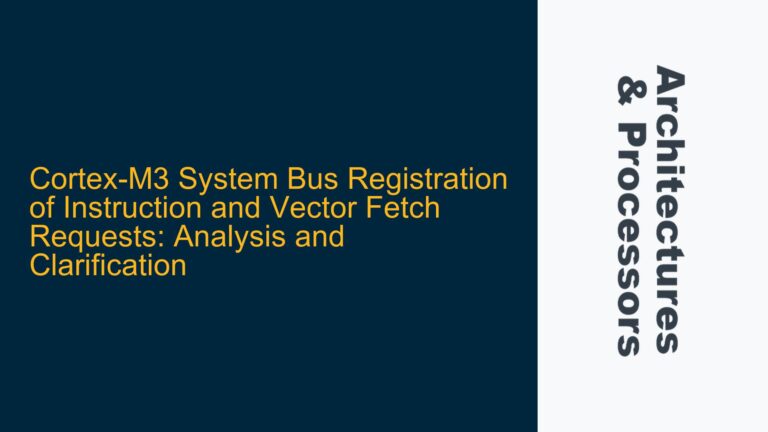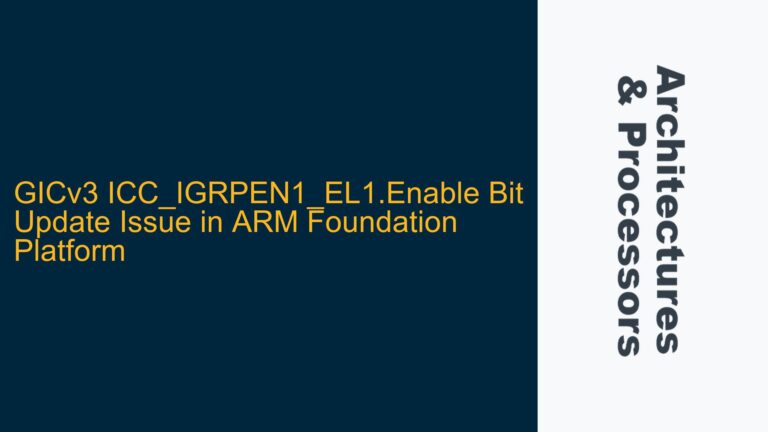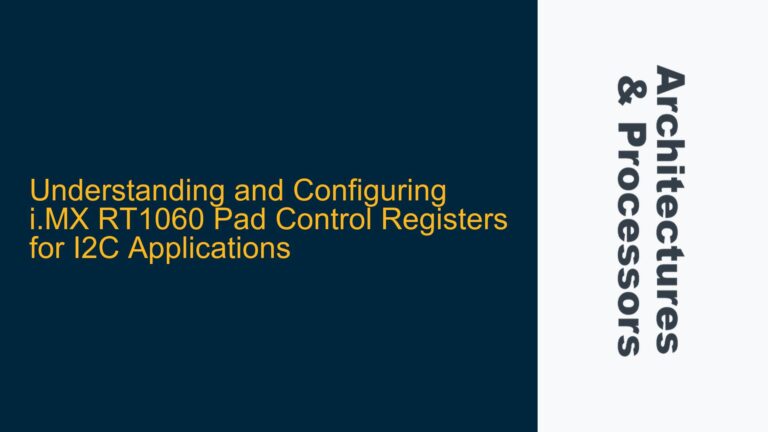Complex Number Operations and ARM NEON Intrinsics: Performance Challenges
Complex number operations are a cornerstone of many signal processing algorithms, including Fast Fourier Transforms (FFT), digital filters, and matrix operations. ARM NEON intrinsics provide a powerful way to accelerate these operations on ARM Cortex-A and Cortex-M processors. However, leveraging NEON intrinsics for complex number operations, particularly using instructions like FCADD (Floating-point Complex Add) and FCMLA (Floating-point Complex Multiply-Accumulate), presents unique challenges. These instructions are designed to handle complex arithmetic efficiently, but their effective use requires a deep understanding of both the underlying hardware and the algorithmic requirements.
The primary issue arises when developers attempt to implement or port algorithms that heavily rely on complex number operations using NEON intrinsics. While libraries like Ne10 provide implementations for common algorithms such as FFT, they may not fully utilize advanced NEON instructions like FCADD and FCMLA. This can lead to suboptimal performance, especially in applications where complex number arithmetic is the bottleneck. Additionally, the transition from Helium (M-Profile Vector Extension) to NEON (A-Profile Vector Extension) can introduce compatibility and performance issues, as the two architectures have different instruction sets and optimization strategies.
Missing or Suboptimal Usage of FCADD and FCMLA in NEON Libraries
One of the key reasons for the performance gap in complex number operations is the absence or suboptimal usage of FCADD and FCMLA instructions in existing NEON libraries. These instructions are specifically designed to accelerate complex arithmetic by performing operations on pairs of floating-point numbers that represent the real and imaginary parts of complex numbers. However, many libraries, including Ne10, do not fully exploit these instructions, either because they were developed before these instructions were available or because the focus was on broader compatibility rather than peak performance.
FCADD performs complex addition by adding the real and imaginary parts of two complex numbers in a single instruction. Similarly, FCMLA performs complex multiply-accumulate operations, which are fundamental in algorithms like FFT and matrix multiplication. When these instructions are not used, the same operations must be implemented using multiple scalar instructions, leading to increased latency and reduced throughput. This is particularly problematic in real-time signal processing applications where performance is critical.
Another factor contributing to the issue is the lack of comprehensive documentation and examples demonstrating the use of FCADD and FCMLA in NEON. While ARM provides detailed technical reference manuals, these documents often assume a high level of familiarity with the architecture and do not always provide practical examples. This makes it difficult for developers to integrate these instructions into their code effectively.
Porting Code from Helium to NEON: Challenges and Solutions
Porting code from Helium to NEON introduces additional complexities due to differences in the instruction sets and architectural features of the two vector processing units. Helium, which is part of the ARMv8.1-M architecture, includes instructions specifically designed for DSP and machine learning workloads, such as complex number operations. NEON, on the other hand, is part of the ARMv7-A and ARMv8-A architectures and has a different set of instructions and optimizations.
One of the main challenges in porting code from Helium to NEON is the difference in register sizes and data types. Helium uses 128-bit registers and supports a wider range of data types, including 8-bit, 16-bit, and 32-bit integers and floating-point numbers. NEON also uses 128-bit registers but has a different set of supported data types and operations. This means that code written for Helium may need to be restructured to fit the NEON architecture, particularly when dealing with complex numbers.
Another challenge is the difference in instruction semantics. For example, Helium includes instructions like VCADD and VCMLA, which are similar to FCADD and FCMLA but have different operand formats and behavior. When porting code, developers must carefully map Helium instructions to their NEON equivalents, ensuring that the semantics are preserved. This often requires a deep understanding of both architectures and may involve rewriting significant portions of the code.
To address these challenges, developers can follow a structured approach to porting code from Helium to NEON. First, they should analyze the Helium code to identify the key operations and data types used. Next, they should map these operations to their NEON equivalents, taking into account differences in register sizes and instruction semantics. Finally, they should optimize the NEON code to take full advantage of the available instructions, including FCADD and FCMLA.
Implementing and Optimizing FCADD and FCMLA in NEON Code
To fully leverage the performance benefits of FCADD and FCMLA, developers must understand how to implement and optimize these instructions in their NEON code. This involves not only using the instructions correctly but also ensuring that the surrounding code is optimized to minimize bottlenecks and maximize throughput.
The first step in implementing FCADD and FCMLA is to ensure that the data is properly aligned and formatted. NEON instructions operate on 128-bit registers, which can hold four 32-bit floating-point numbers. For complex numbers, this means that each register can hold two complex numbers, with the real and imaginary parts stored in adjacent elements. Developers must ensure that the data is laid out in memory in a way that allows efficient loading and storing of these registers.
Once the data is properly formatted, developers can use FCADD and FCMLA to perform complex arithmetic. For example, to add two complex numbers, developers can use the FCADD instruction to add the real and imaginary parts in a single operation. Similarly, to perform a complex multiply-accumulate operation, developers can use the FCMLA instruction to multiply two complex numbers and add the result to an accumulator register.
Optimizing the use of FCADD and FCMLA requires careful consideration of the surrounding code. For example, developers should ensure that the data is loaded into registers in a way that minimizes memory access latency. They should also avoid unnecessary data movement between registers, as this can introduce additional latency. Additionally, developers should take advantage of NEON’s ability to perform multiple operations in parallel by using instruction-level parallelism and pipelining.
To illustrate the optimization process, consider the following example of a complex multiply-accumulate operation using FCMLA:
#include <arm_neon.h>
void complex_multiply_accumulate(float32_t *a, float32_t *b, float32_t *acc, int n) {
for (int i = 0; i < n; i += 2) {
float32x4_t va = vld1q_f32(&a[i]);
float32x4_t vb = vld1q_f32(&b[i]);
float32x4_t vacc = vld1q_f32(&acc[i]);
vacc = vcmlaq_f32(vacc, va, vb);
vst1q_f32(&acc[i], vacc);
}
}
In this example, the vcmlaq_f32 intrinsic is used to perform a complex multiply-accumulate operation on two complex numbers stored in NEON registers. The data is loaded and stored using vld1q_f32 and vst1q_f32, respectively, to ensure efficient memory access. The loop is unrolled to process two complex numbers at a time, taking advantage of NEON’s 128-bit registers.
Best Practices for Using FCADD and FCMLA in NEON
To achieve the best performance when using FCADD and FCMLA in NEON, developers should follow a set of best practices. These practices are based on the architectural features of NEON and the specific requirements of complex number operations.
First, developers should ensure that the data is properly aligned in memory. NEON instructions perform best when the data is aligned to 16-byte boundaries, as this allows for efficient loading and storing of 128-bit registers. Misaligned data can result in additional memory access latency and reduced performance.
Second, developers should minimize data movement between registers. NEON instructions are designed to operate on registers, and excessive data movement can introduce additional latency. Developers should structure their code to keep data in registers as much as possible, using techniques like loop unrolling and instruction-level parallelism.
Third, developers should take advantage of NEON’s ability to perform multiple operations in parallel. NEON supports SIMD (Single Instruction, Multiple Data) operations, which allow multiple data elements to be processed in parallel. By using SIMD operations, developers can significantly increase the throughput of their code.
Finally, developers should profile their code to identify and address performance bottlenecks. Profiling tools can provide insights into the performance of individual instructions and help developers identify areas where optimizations can be made. By iteratively profiling and optimizing their code, developers can achieve the best possible performance.
Conclusion
Optimizing complex number operations using ARM NEON intrinsics, particularly with instructions like FCADD and FCMLA, requires a deep understanding of both the hardware and the algorithmic requirements. By addressing the challenges of missing or suboptimal usage of these instructions in existing libraries, porting code from Helium to NEON, and implementing and optimizing FCADD and FCMLA in NEON code, developers can achieve significant performance improvements in their applications. Following best practices for data alignment, minimizing data movement, leveraging SIMD operations, and profiling code will further enhance performance and ensure reliable system implementations.
